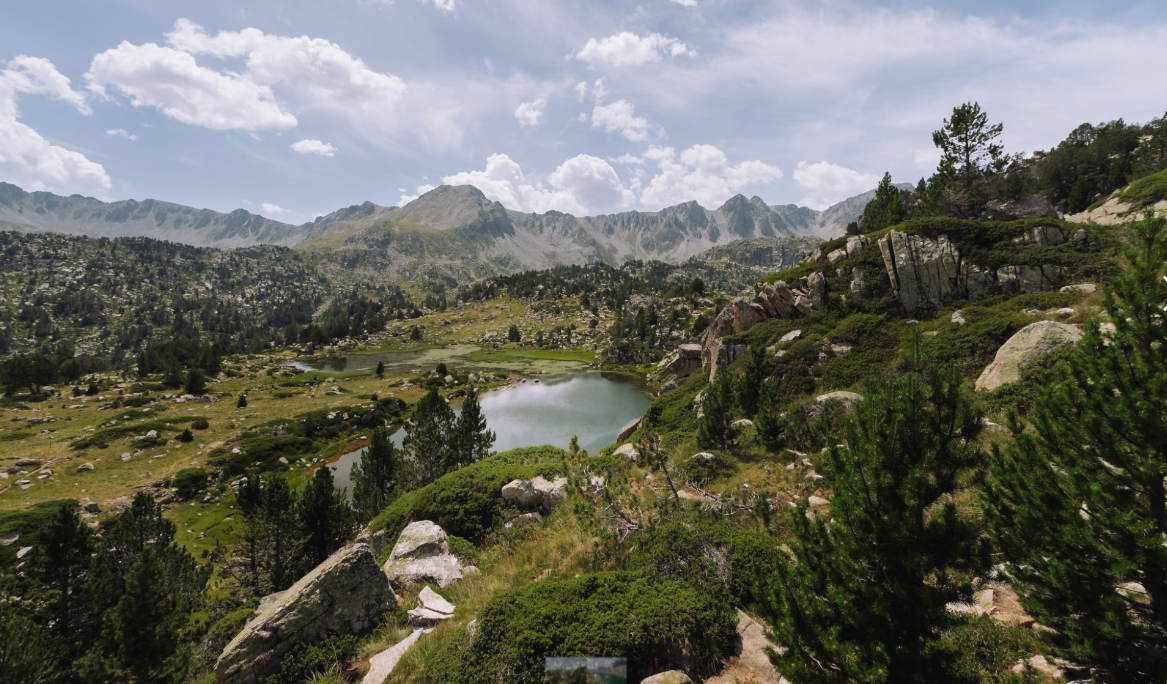CREAF attends the Conference of Parties 15 for biodiversity, held this year in Montreal, Canada, and is organised every two years by the Convention on Biological Diversity (CBD). It will do so thanks to a CREAF delegation teamed up with Alícia Pérez-Porro, CREAF scientific coordinator, Lluís Brotons, CSIC researcher at CREAF, and CREAF researchers Sergi Herrando and Daniel Villero, all of them will be in Canada from 9 to 16 December. This delegation will coincide with a commission of the Government of Catalonia, which will also attend to present the initiatives they currently promote to reverse the loss of biodiversity and that are included in the Natural Heritage and Biodiversity Strategy of Catalonia 2030.

“Science must have a place in international multilateral conventions such as COPs, because of the scientific component of the issues being discussed, as well as to inform about the possible solutions to face them”, says Pérez-Porro, adding, “unlike the climate emergency, where many public policies are focused on reducing greenhouse gas emissions, in biodiversity conservation, we find a paradigm shift, with different definitions of biodiversity (the totality of living beings, genetics and ecosystems), with more widespread challenges to address and a lack of comparable indicators to those of CO2 concentration that includes the climate debate”.
Alicia Pérez-Porro, CREAF’s scientific coordinator.
This is the first year CREAF, as a research centre, acts as an observer institution at a biodiversity COP; also, the members of this delegation represent essential scientific bodies in the study and monitoring of biodiversity loss. On the one hand, Lluís Brotons has an outstanding role as a member of the IPBES, the Intergovernmental Panel on Biodiversity and Ecosystem Services (a sibling panel to the IPCC, but focused on nature preservation), and Sergi Herrando, a member of the European Bird Census Council coordination team, the European reference body for monitoring birds, key groups for understanding the state of health of the planet. Both, together with Daniel Villero, an expert in reptiles and amphibians, are travelling to Montreal to share knowledge on how climate change, fires and changes in land use affect biodiversity, the role of citizen science in the long-term monitoring and, most importantly, to explain the experience of transferring knowledge to public policy and decisions makers, a line of work that has enabled CREAF to coordinate the first report on the State of Nature in Catalonia and the Biodiversity Observatory of Natural Heritage and Biodiversity in this region.
At this COP, which has been postponed several times by COVID-19 and was going to be held initially in Kunming (China), countries will negotiate an ambitious, comprehensive and transformative global framework to preserve and restore biodiversity beyond 2020. The aim will be to effectively and simultaneously address biodiversity loss’s direct and indirect drivers and promote nature restoration. Moreover, it will incorporate indigenous’ rights and equity improvements.
Montreal wants to be the “Paris of biodiversity”
Just as the UNFCCC COP21 in Paris was the birth of the Paris Agreement, the CBD COP15 in Montreal aims to be the “Paris of biodiversity”, a groundbreaking meeting that will set ambitious objectives and actions to reverse the biodiversity loss to tackle the climate crisis. The idea is to propose intermediate milestones for 2030 to accelerate political action in defence of nature and to set the main pillars for 2050.

The CBD is a multilateral treaty on how nations should use and protect the Earth’s natural resources on which humanity depends. It was born to halt biodiversity loss by 2010 and was opened for signature at the Rio Summit in 1992; all UN countries ratified it except the United States (so far, 196 countries have signed it). It is clear that its initial goal of halting biodiversity loss by 2010 failed, so at the CBD COP10 conference in Japan in 2010, a new 10-year strategic plan was agreed upon, including the 20 Aichi Biodiversity Targets. None of these targets has been fully met, but we have much to learn from the way forward over the past ten years.
“Despite the failure, up to 70 birds and mammals species have been prevented from extinction since the CBD came into force in 1993. Conservation efforts have been manifold and have not failed across the board, but we need more ambitious measures and we need to improve on the actions taken so far,” says Pérez-Porro.
30 by 30, restoration and pro-nature funding changes
The science is clear: as global biodiversity continues to decline at an alarming rate, we must restore the natural processes we have lost and protect 30% of terrestrial, inland water and marine areas by 2030 – the famous ’30 by 30′ proposed by the European Union..

“It is important to remember that it is necessary to maintain and increase the protection of biodiversity but also to recover nature where we have lost it in order to reverse its loss both inside and outside protected areas and move towards a transformation of our societies compatible with its preservation”.
Lluis Brotons, CSIC researcher at CREAF.
COP15 also aims to reform subsidy policies that currently spend around $1.8 trillion a year to subsidise activities that harm nature, according to a report by coalitions of sustainability-focused business and conservation groups. On the other hand, they want to promote incentives and increase funding to support nature, aiming to redirect this cash flow to protect biodiversity. Investments in nature-based solutions, i.e. using the protection, management and proper restoration of ecosystems to solve societal problems, must be increased at least threefold by 2030. This is the only way to combat climate change, biodiversity loss and desertification, according to the UN’s State of Nature Finance 2021 report.







